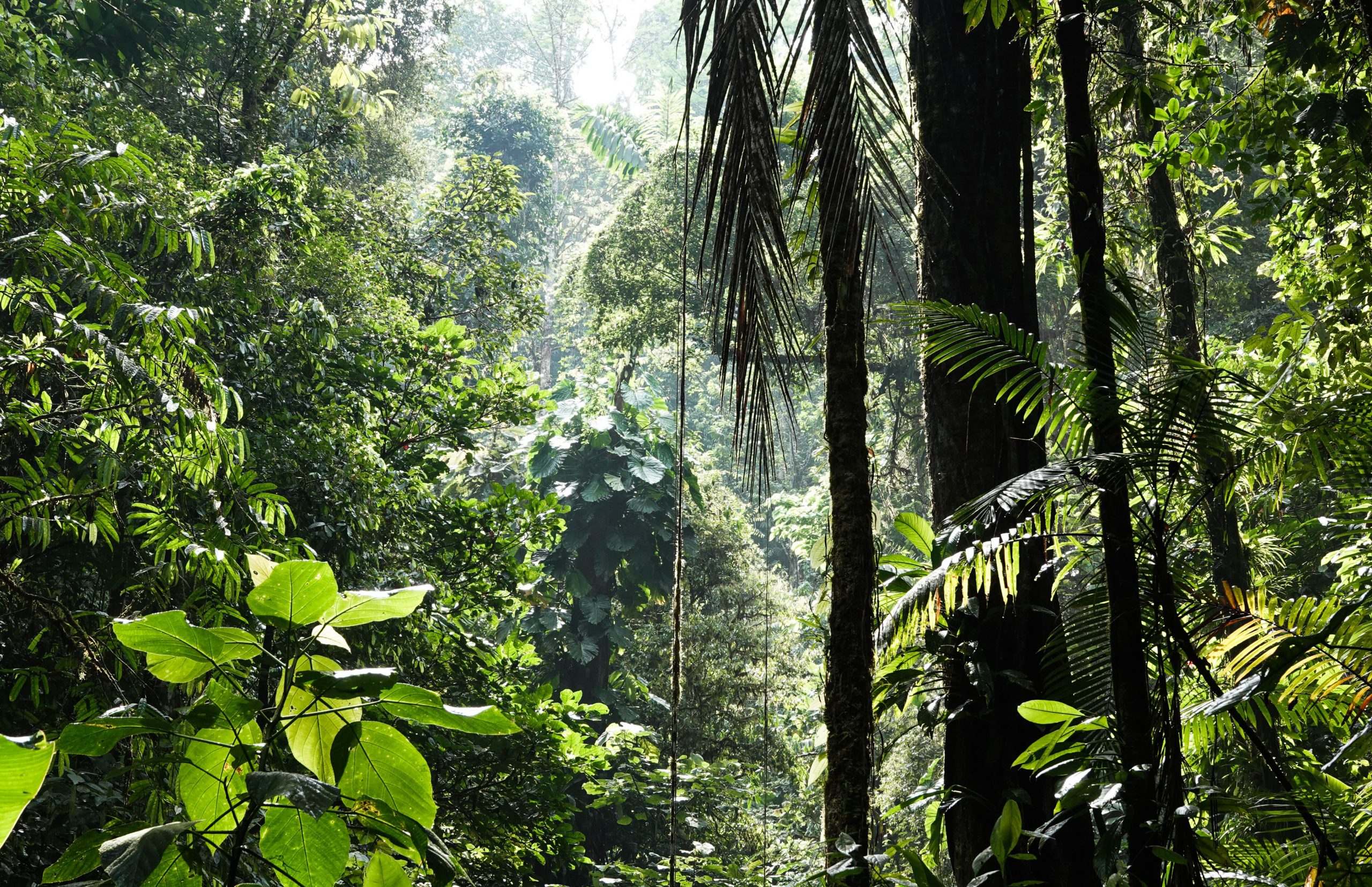
Why should I plant trees?
Trees absorb and lock away carbon – on average about 22kg of CO2 per year[1] – so it’s horrifying that human activity has already cleared about half of the Earth’s tropical forests[2] and a further 7.3 million hectares are destroyed every year.[2] That’s the same as about 10.5 million football (soccer) pitches or 13.7 million NFL football fields.
Research shows that planting billions of trees is the simplest and cheapest way to help tackle the climate crisis[3]. The study’s authors calculated that it should be possible to increase tree cover by 25%. When mature, the extra forested areas would be capable of locking away 200 gigatonnes of carbon (25% of current atmospheric carbon)[3].
While we absolutely must reduce emissions as well, planting trees is a quick, easy win, because it doesn’t require political will or rely on technology that hasn’t been invented yet. It’s a low-tech, cheap solution that can be started right now by anyone, anywhere.
In addition to capturing carbon, responsible reforestation also:
- prevents soil erosion
- improves soil health
- prevents flooding by improving groundwater recharge (the process by which water returns to the water table)
- supports native plants and animals
- regulates local temperatures (e.g. cooling cities naturally)
- and provides work for local communities
Where does tree planting have the most effect?
Trees planted in tropical areas were long believed to have the most impact[4]. So, on a global scale, it’s good to support a scheme that aims to plant millions of trees in equatorial areas, like Earth Day’s Canopy Project. Alongside many other campaigns, they plant trees in areas most at risk from climate change and after environmental disasters.
However, more recent evidence indicates that the UK’s older trees lock away twice as much carbon as previously thought – so really there’s no bad place to plant a tree, so long as it’s a native tree, and not in a monoculture (i.e. not a huge area all planted with the same type of tree).
Here are some great examples of international tree planting.
How can I plant more trees in my area?
If you’re in charge of a lot of land (e.g. managing an estate, a park, a school or looking after community-owned land), check out the Woodland Trust’s tree planting scheme. They can help with access to grants and funding schemes and suggest which trees you should plant. They can even supply free trees to schools and communities. Applications open in spring for autumn delivery, because it’s best to plant trees in late autumn/winter.
In your area, support schemes to plant native trees in public spaces, or plans to plant locally-appropriate woodland and forests, and support campaigns to replant forests that have been destroyed by farming and mining. Support these schemes even if they change your local landscape so it looks unfamiliar to you.
If you have room at home, plant a native and appropriately-sized tree. Research how big it will grow, or ask a tree specialist, so you don’t cut out all your light and damage your home’s foundations. If you plant a fruit tree, you can also have a free seasonal supply of apples, pears or other fruit.
If you have less space, planting any leafy plant will help. Consider planting fruit bushes, or something that flowers in the winter, like viburnum, to provide early or out-of-season food for beneficial insects like bees.
If you have no outdoor space at all, even indoor plants will help. They’ll remove CO2 from the air, and they’ll also help remove volatile organic compounds (given off by furnishings and paint) from your home. Good Housekeeping, quoting a study by NASA, recommends aloe vera, areca palm and snake plant, among others.
[1] Urbanforestrynetwork.org. (2019). Trees Improve Our Air Quality. [online] Available at: http://urbanforestrynetwork.org/benefits/air%20quality.htm [Accessed 27 Jul. 2019]
[2] Earth Day. n.d. The Canopy Project | Earth Day. [online] Available at: <https://www.earthday.org/campaign/the-canopy-project/> [Accessed 14 February 2021].
[3] “The restoration of forested land at a global scale could help capture atmospheric carbon and mitigate climate change.”) Bastin et al (2019). The global tree restoration potential. Science, [online] 365(6448), pp.76-79. Available at: https://science.sciencemag.org/content/365/6448/76.
[4] Carrington, D., 2019. Tree planting ‘has mind-blowing potential’ to tackle climate crisis. [online] the Guardian. Available at: <https://www.theguardian.com/environment/2019/jul/04/planting-billions-trees-best-tackle-climate-crisis-scientists-canopy-emissions> [Accessed 14 February 2021].
[5] Gill, V. (2022) UK’s old trees critical to climate change fight, BBC News. BBC. Available at: https://www.bbc.co.uk/news/science-environment-64028694 (Accessed: February 5, 2023).
Image credits:
Rainforest: photo by Alenka Skvarc on Unsplash
Apples on a tree: photo by Sokmean Nou on Unsplash